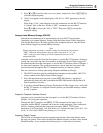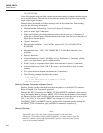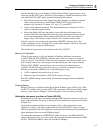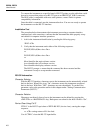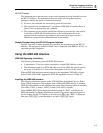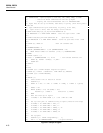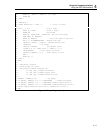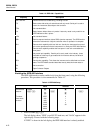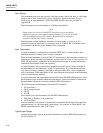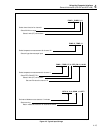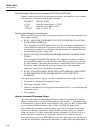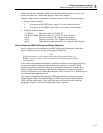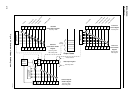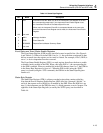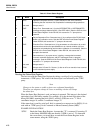
Using the Computer Interface
General Information (RS-232 and IEEE-488)
4
4-13
2. Press D to scroll to "IEEE"; then press E to enable the IEEE-488 interface and
disable the RS-232 interface. "IEEE" will not appear in the left display if the IEEE-
488 interface is not installed.
3. The instrument must now be assigned an address ("0" to "30", inclusive). If you
want to make a change, scroll to the desired address with the G and D buttons.
Then press E to select the displayed address. The address remains selected until
it is changed.
Note
Pressing C at any point returns the instrument to the Inactive Mode,
leaving the original interface selection unchanged. If RS-232 was active,
the instrument returns to RS-232, with all parameters unchanged.
Installation Test
The procedure below demonstrates how the instrument processes a computer interface
command and, at the same time, confirms that the instrument has been properly set up
and cabled for IEEE-488 operations:
Note
This is a program as entered from a Fluke 1722A Instrument Controller
using Fluke BASIC commands. Syntax may vary with the host computer
and language.
Enter the following at the host:
INIT PORT 0 <CR>
CLEAR PORT 0 <CR>
PRINT @ <address of instrument>, "*IDN?" <CR>
INPUT LINE @ <address of instrument>, A$ <CR>
PRINT A$ <CR>
1. Verify that the instrument sends the following identification response:
FLUKE,2620A,0,Mn.n An.n Dn.n
Mn.n identifies the main software version.
An.n identifies the A/D software version.
Dn.n identifies the display software version.
If the instrument does not respond to the test procedure as indicated, make the following
checks:
1. Check all cable connections.
2. Check that the interface has been properly enabled and addressed.
General Information (RS-232 and IEEE-488)
How the Instrument Processes Input
The following paragraphs summarize how the instrument processes input that is received
from a host (or stand-alone terminal).
Note
In this manual "input" means a string sent to the instrument from a host.
"Output" means a string sent from the instrument to the host.



